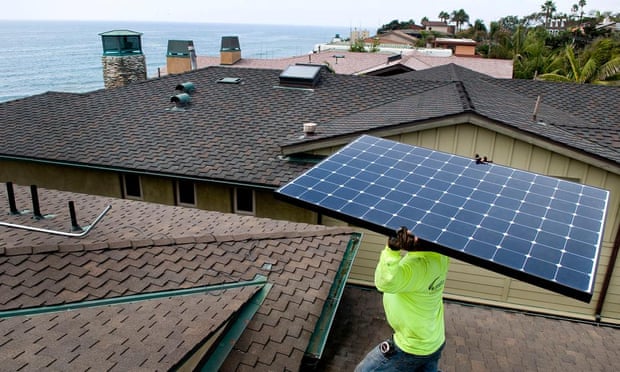US energy secretary announces new office of technology
transitions to help facilitate financing by connecting would-be investors with
clean-energy firms.
With $4bn and a new government office, the White House has
unveiled its latest clean energy initiative and cast a subtle new role for the
federal government: not only is it a funder of new research, of the latest
solar converter or biofuel source, but it is also a market builder.
“One of the real challenges is the gap in financing clean
energy,” said Ernest Moniz, US secretary of energy, at a press conference on
Monday. “There is a continuing need for new capital investment.”
The new initiative follows on a White House pledge in
February to organize mission-driven renewable energy investors, concentrating
their impacts and providing information to would-be investors daunted
by an unfamiliar clean-energy landscape.
At the press conference on Monday, Moniz and senior advisor
Brian Deese fleshed out the details: $4bn in commitments from pension funds,
family foundations and other so-called impact investors, and a newly unveiled
office of technology transitions that will serve as an all-purpose
informational resource for clean-energy investment.
“We will not make investment decisions, or directly engage
in them,” said Moniz, but rather provide information to help guide discussions
of people not already steeped in the field. While providing information sounds
nebulous, it’s arguably what renewable energy needs most now: not new
breakthroughs, but something to catalyze investments that can make existing
breakthroughs go mainstream.
The initiative represents the latest stage in the Obama
administration’s clean-energy policies. In some quarters, these are still
synonymous with Solyndra, the California-based solar cell manufacturer that went
bankrupt after receiving $535m from the US department of energy.
Yet that reputation is mostly unfair – and not just because
the loan program responsible for the Solyndra deal is expected
to turn a $5bn profit. The US now leads the world in wind energy production;
the price of solar
energy has plummeted, and adoption jumped.
The administration’s policies “made a tremendous difference
in driving the cost of these technologies down”, said Nathanael Greene,
director of the Natural Resources Defense Council’s renewable energy policy
program. The challenges now, he said, are not so much technical as logistical.
These range from solar-panel zoning standards to helping
investors understand the clean energy investment space. It can be confusing,
said Greene, particularly for investors unfamiliar with both the technology and
the sorts of financial arrangements used in impact investments seeking both
profit and social good.
“The program will help explain the technology, the stages of
investment. It will pave the research landscape,” said Greene. “This is about
helping the private sector understand and invest in clean energy.”
The announcement also comes just more than a year after the
Obama administration announced its plan to cut carbon pollution from power
plants by30%,
and with Congress having recently found rare bipartisan
agreement on energy
efficiency.
At the press conference, several reporters pressed Moniz for
details on what the new investment landscape would look like. How would the
$4bn in investments differ if made independently, rather than under the
auspices of the new initiative?
“I can’t give you an example yet,” said Moniz, “but check
back in a year. I hope I’ll have a bunch.”


No comments:
Post a Comment